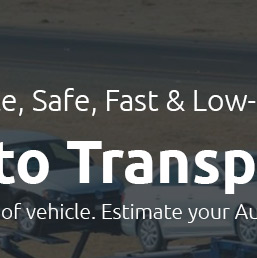 |
|
||||
 |
 |
 |
 |
||
 |
 |
|||||
 |
 |
 |
 |
 |
 |
 |
||
 |
 |
 |
 |
 |
 |
 |
 |
 |
 |
 |
|
 |
Understanding Railway Vehicle Transport: What to ExpectRailway vehicle transport stands as a cornerstone of modern logistics, weaving through the fabric of our infrastructure with a robust elegance that underscores its historical significance and contemporary relevance. It is a mode of transport that not only carries goods and passengers but also conveys a sense of timeless continuity, connecting past innovations with future possibilities. One might ask, what exactly is railway vehicle transport? At its core, it involves the movement of goods and people via a network of tracks, employing various types of trains and carriages that are specially designed to optimize efficiency and capacity. The beauty of railway transport lies in its ability to handle vast quantities of cargo, from coal and steel to consumer electronics and perishables, all while maintaining a lower carbon footprint compared to other forms of land transport. Anticipating the Journey The journey begins with an understanding of the logistical frameworks that support this massive network. Railways require an intricate choreography of scheduling, maintenance, and real-time adjustments to ensure smooth operations. For businesses considering railway transport, it is crucial to appreciate the importance of timeliness and reliability. Railways often run on fixed schedules, which means planning shipments well in advance to align with these timetables is essential. While delays can occur, the structured nature of rail transport generally allows for precise planning and predictable transit times, a stark contrast to the unpredictability often found in road transport. Moreover, the impact of technological advancements cannot be overstated. Modern trains are equipped with state-of-the-art systems that enhance safety and efficiency, such as automated control systems, real-time tracking, and improved engine designs that reduce fuel consumption. These innovations are not only setting new standards for performance but also are reshaping expectations about what railway transport can achieve. With increasing investments in high-speed rail and magnetic levitation technologies, the future of railway transport promises to be faster, more efficient, and more sustainable.
Railway vehicle transport offers a unique blend of reliability and sustainability, making it a compelling choice for businesses and travelers alike. However, entering this realm requires an understanding of its intricate systems and the ability to navigate its structured schedules. For those willing to embrace these challenges, the benefits are substantial-ranging from economic efficiency to environmental stewardship. As we move towards a future where logistics will increasingly focus on sustainability and efficiency, railway vehicle transport will undoubtedly play a pivotal role, continuing to connect cities, countries, and continents with an unwavering commitment to innovation and progress. https://www.amtrak.com/auto-train-boarding-and-vehicle-requirements
The Auto Train doesn't have checked baggage service and you will not have access your car during the journey. Valuables should not be left in your vehicle. https://mercuryautotransport.com/auto-transport-by-rail/
You might be wondering why rail isn't an effective way to transport your vehicle. Well, the rail system is not what it used to be. Furthermore, the method of ... https://www.autostartransport.com/blog/transport-your-vehicle-by-train-across-the-country/
This guide explores the world of cross-country train shipping for vehicles, outlining the process, limitations, and considerations to help you decide if it's ...
|
